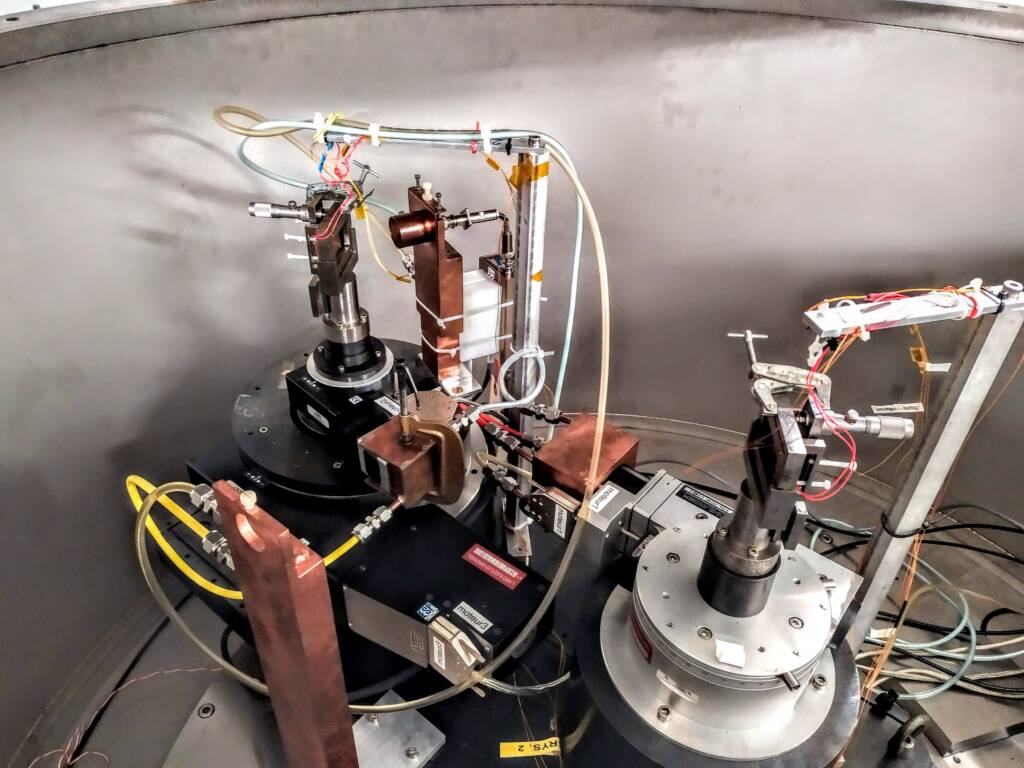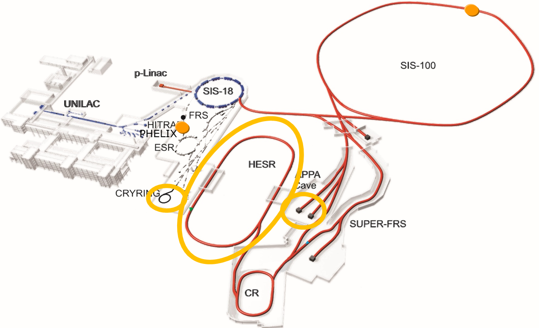Highly charged ions
The precision study of the quantum structure of few-electron highly-charged ions (HCI) enables understanding quantum electrodynamics, and studying transitions that are naturally found in astrophysical plasmas, like stars.
The LKB team studies HCI in two different experiments:
- Paris Double Crystal Spectrometer (DCS)
- SPARC collaboration at GSI/FAIR

Wanna learn more? Here are some recent results and foundational papers from the Paris DCS:
- Absolute measurement of the relativistic magnetic dipole transition in He-like sulfur, J. Machado et al. Physical Review A 107, 032821 (2023).
- Reference-free measurements of the 1𝑠2𝑠2𝑝2𝑃𝑜1/2,3/2→1𝑠22𝑠2𝑆1/2 and 1𝑠2𝑠2𝑝4𝑃5/2→1𝑠22𝑠2𝑆1/2 transition energies and widths in lithiumlike sulfur and argon ions, J. Machado et al, Physical Review A 101, 062505 (2020).
- Absolute Measurement of the Relativistic Magnetic Dipole Transition Energy in Heliumlike Argon, P. Amaro et al, Physical Review Letters 109, 043005 (2012).
- A vacuum double-crystal spectrometer for reference-free X-ray spectroscopy of highly charged ions, P. Amaro et al, Radiation Physics and Chemistry 98, 142 (2014).
The Paris Double Crystal Spectrometer (DCS)
The Paris Double Crystal Spectrometer located on the Jussieu campus at Sorbonne University is a world-unique installation that couples an electron cyclotron resonance ion source (ECRIS) with a double crystal spectrometer that allows us to perform precision spectroscopy of few-electron medium-Z ions to the few ppm level. The spectrometer is based around two Si111 crystals made by NIST (USA), and whose lattice spacing is characterized to 10-9 relative accuracy. X rays emitted by the ECRIS source diffract off the crystals, and by using Bragg’s law with some corrections we can obtain the x-ray wavelengths (and thus energies) by measuring the diffraction angle with high precision.
With this instrument we can make so-called “reference-free” x-ray spectroscopy, because we don’t need an external radioactive source to calibrate, but can obtain our energy calibration directly from knowledge of the crystals’ lattice spacing and their temperature.
The current configuration of the experiment allows us to study x rays in the energy range of 3-10 keV. The ECRIS is a high-intensity source of HCI with a plasma density of 1011 ions/cm3 , meaning that we have access to weakly-populated, forbidden transitions like the magnetic dipole transitions in He-like ions, that cannot be measured with other methods (like Electron-Beam Ion Trap spectroscopy).
The Paris DCS has made the world’s most accurate measurements of transitions in He-like and Li-like Ar and S. Ongoing efforts aim at targeted higher Z species and certain lines of astrophysical interest.
The SPARC collaboration at GSI/FAIR
The exotic ions team is part of the SPARC collaboration at the GSI/FAIR facility in Darmstadt, Germany. At this facility, the heaviest HCI can be created with the high-energy accelerators, and the ESR and CRYRING storage rings allow to cool and store the heavy HCI for precision experiments. SPARC is the only collaboration in the world capable to access, for example, the x-ray transitions in H-like Uranium.
The LKB team contributes to SPARC both for experimental development and QED theory. We recently played a major-role in the spectroscopy of He-like Uranium, that allowed to access second-order QED for the first time in this HCI regime, published in:
Testing quantum electrodynamics in extreme fields using helium-like uranium, Nature 625, 673–678 (2024).
For more information on SPARC, check out the GSI/FAIR website.


